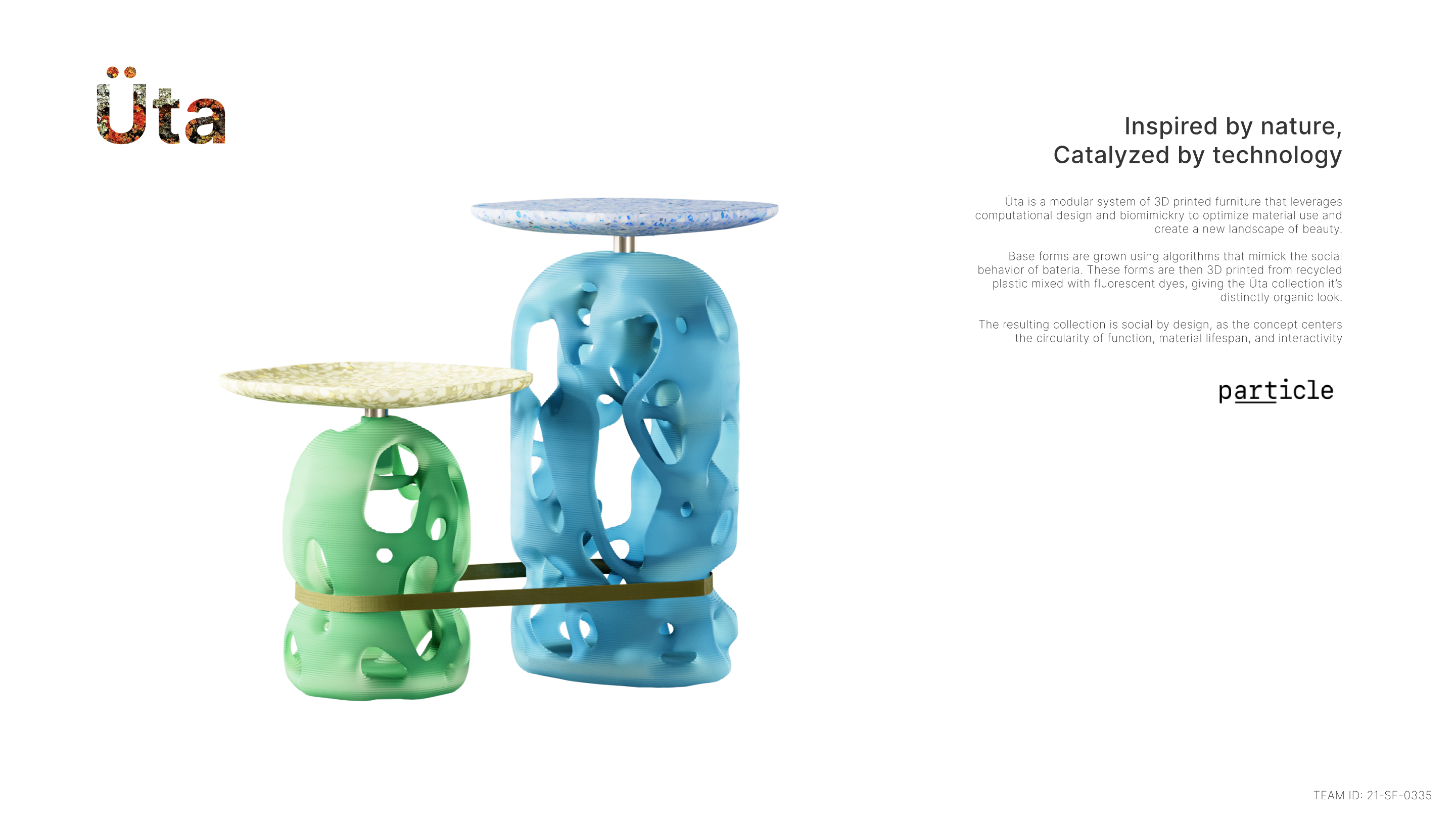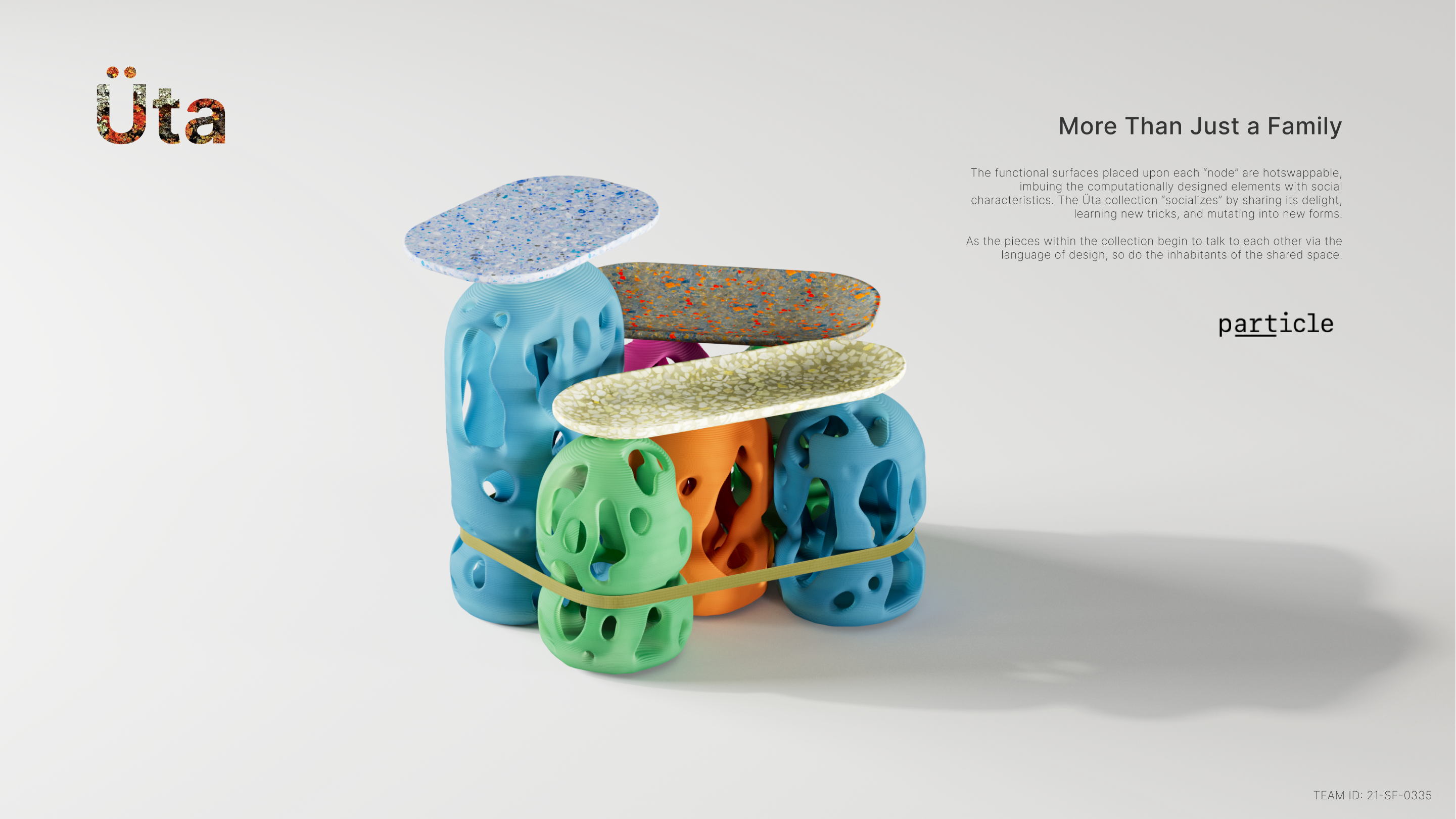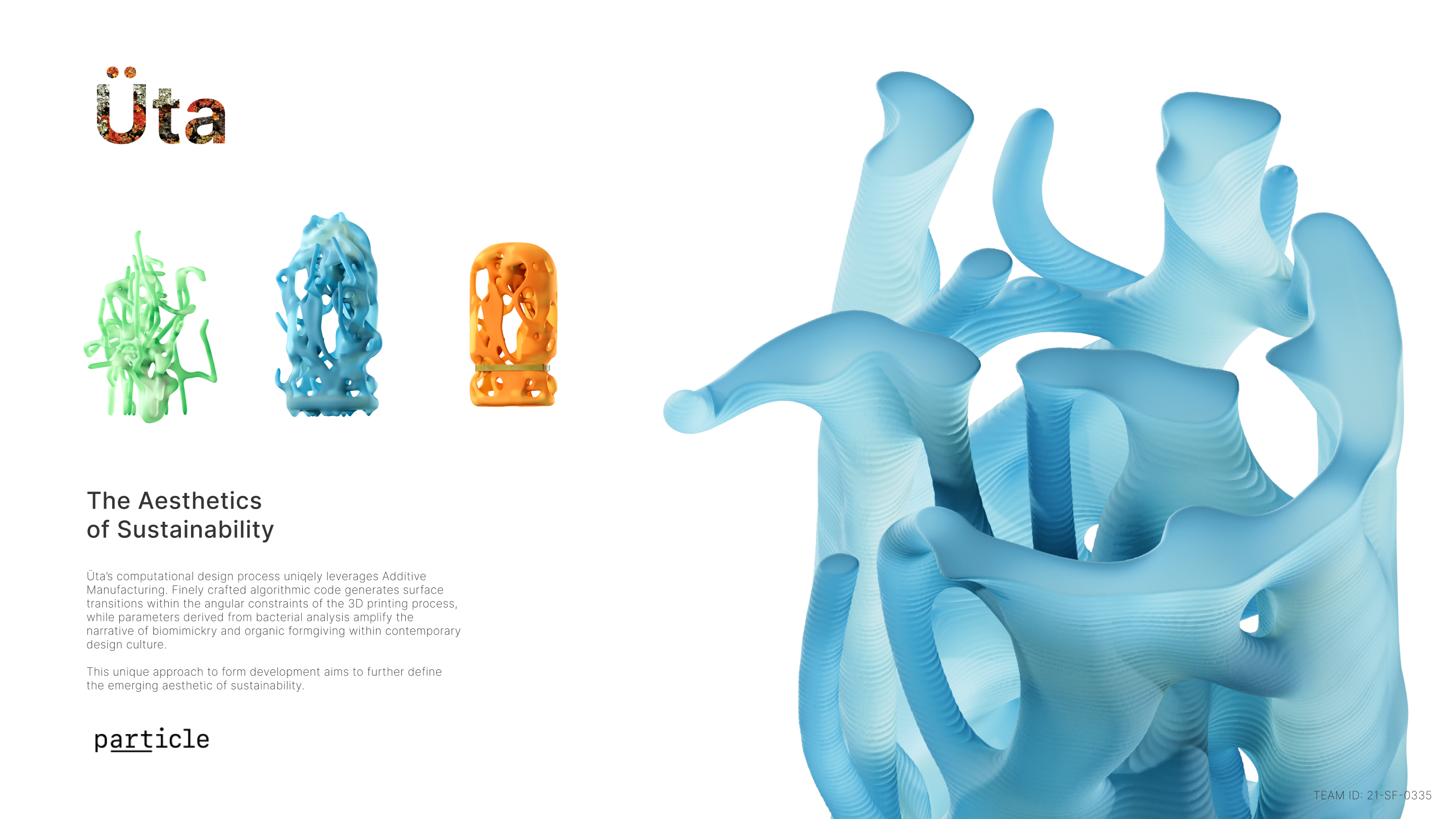Üta
Adam Saleh
Oomung Varma
Stemming from an examination of circular and sustainable design, our team sought to further the rich tradition of biologically-inspired Italian design. We infused this biophilic approach with the advantages and possibilities offered by generative tools and additive manufacturing techniques. This combination of the old and the new is our key to building new frameworks for circular economies.
Biophilic design leverages the natural human attraction to the beauty of life. We can use this innate behavior to develop emotional connections with products that promote the circular economy. To create this new form of beauty, we researched the social architecture of ancient bacteria and wrote subsequent algorithms to “grow” colonies of social furniture. This simulation-based approach prioritizes the reduction of material while maintaining both a defined silhouette and an optimal strength-to-weight ratio.
By designing for disassembly and interchangeability, Üta’s design system extends the lifespan of social furniture across generations. As individual components pass along the hands of ownership, they are reconfigured and take on new functions. In this way, our project not only outlines new aesthetics, but also stimulates new behaviours for the circular economy. Thus, Üta creates a culture where biological processes are not mimicked, but are embodied.
There are few forces in this world as pervasive as design. Modern design methods blend the essential flavors of life into unforgettable objects and experiences. With this in mind, our approach leans on aesthetics, ergonomics, and logistics to create deep relationships between people, objects, spaces, and systems.
Our design team understands that these relationships are at the core of creating culture. People buy into the economies which provide the products that suit their tastes. We aim to represent sustainable products in a way which not only ticks the existing boxes of customer needs, but also in a way that adds new aesthetic, ergonomic, or logistical value. If done correctly, then there is no friction in a culture’s transition towards a circular economy.
Üta fuels the creation of a culture built upon the circularity of natural biology - a new landscape of design which we continually uncover using advanced tools and holistic perspectives.






COMMENTS